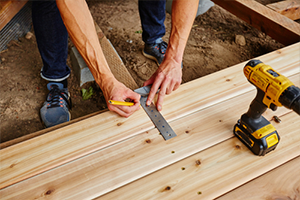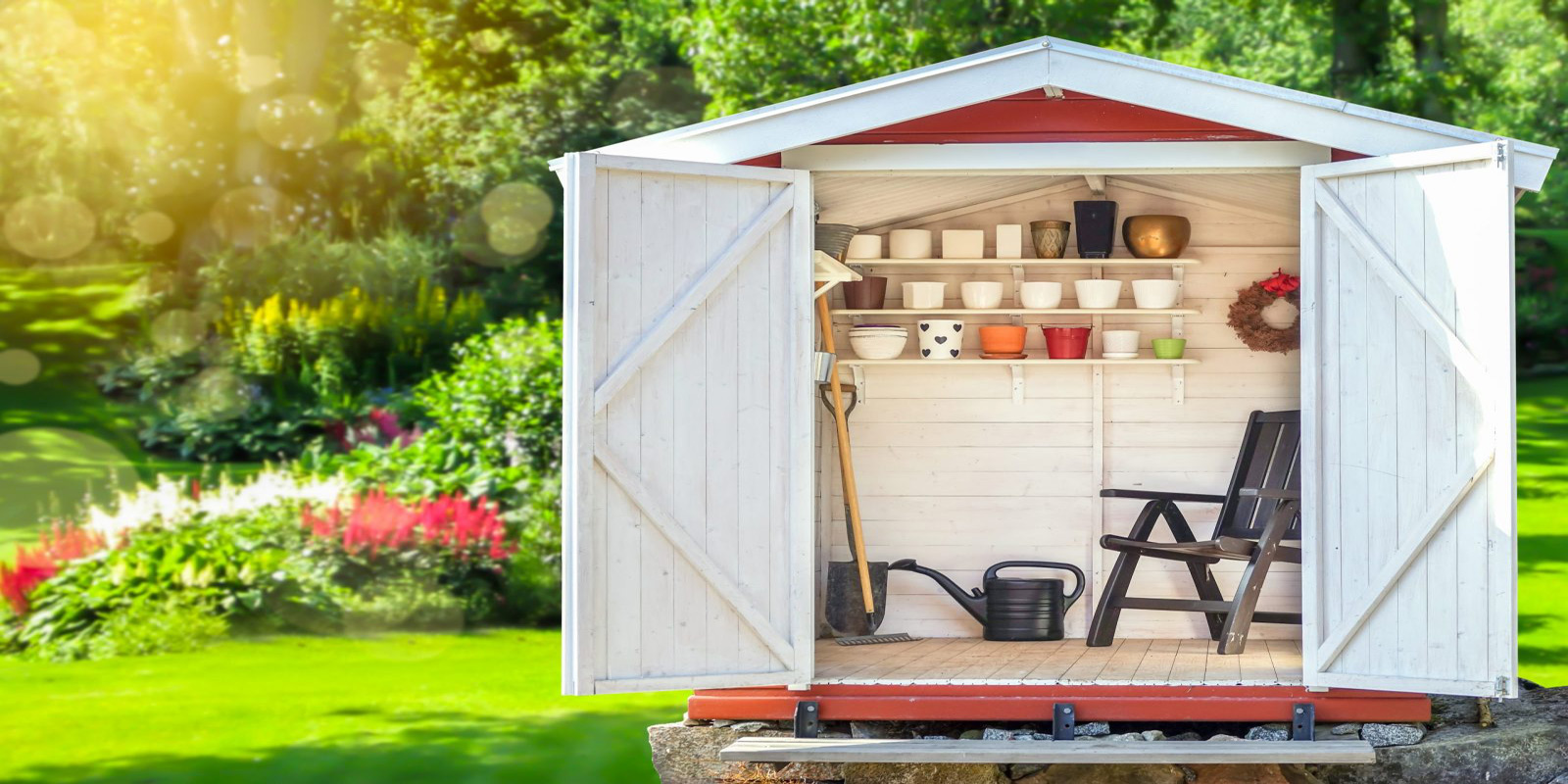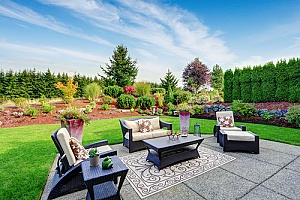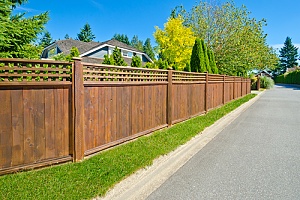 Building a privacy fence is essential for turning a yard into an outdoor extension of your home. Chain link fences are cheaper, but they look cheaper, too. No one has ever commented on the beauty of a chain link fence.
Building a privacy fence is essential for turning a yard into an outdoor extension of your home. Chain link fences are cheaper, but they look cheaper, too. No one has ever commented on the beauty of a chain link fence.
Additionally, chain link fences allow your neighbors to see into your yard. It can feel like you are being watched any time you are in the yard, and that can make it much less pleasant to spend time in your yard.
Whether your yard has no fencing or you just need to replace an old fence, a privacy fence can make a great addition to your yard. Although it is a project that many homeowners can complete on their own, it is best to be sure that you know what you are doing before you start. Here is our quick guide to building a privacy fence.
Standard Practices For Privacy Fences
People have been building wooden privacy fences for a long time now, and the design and building process have been more or less perfected. These are the basics:
Local Codes
The first thing you should always do is refer to the local building codes and HOA regulations. These will often have clear limits on how tall your fence can be, how deep the posts have to be sunk and other elements of your project. They may also have guidelines for the placement of the fence. For instance, some neighborhoods will not allow you to build a fence in the front yard.
In some cities, you will need a permit to build a fence. This is important; if you need a permit and do not get one, the city may fine you and require you to tear down the fence at your own expense. Consequently, it is important to make sure any fence you build is legal in your area.
Property Lines
If you are going to build a fence around your property, you need to know where your property ends and the next one begins. If the neighbors already have a privacy fence in place, you may want to reconsider building one. Be sure to discuss any plans you have with your neighbors. Building a fence may require access to their property at times.
Height
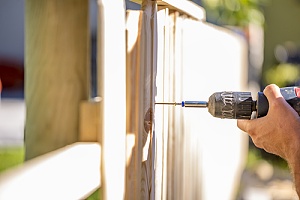 For a true privacy fence, six feet is generally the minimum height. Eight feet will give even more privacy, but fences that tall are rare. They are less stable than six-foot fences, and many HOA’s will not allow fences that tall. An eight foot fence is usually used when your property is at a lower elevation than your neighbor’s.
For a true privacy fence, six feet is generally the minimum height. Eight feet will give even more privacy, but fences that tall are rare. They are less stable than six-foot fences, and many HOA’s will not allow fences that tall. An eight foot fence is usually used when your property is at a lower elevation than your neighbor’s.
If your house is at a higher elevation than the neighbor’s, a four feet fence might be all you need. In most neighborhoods, though, the houses are more or less level with neighboring property, and a six foot fence is ideal to ensure privacy.
Fence Posts
The fence posts are the support for the whole structure, so the placement of fence posts is critical. Never space your posts more than eight feet apart. Doing so will cause the fence to sag over time and eventually collapse.
The more posts you have, the stronger the fence will be. However, you will rarely see fences with posts much closer than eight feet apart. Digging post holes is a lot of work, and fence posts cost money. Most people find that eight feet is the sweet spot — you have enough support to keep the fence strong for a long time, but you will not spend too much time or money on the fence posts.
Horizontal Supports
Each fence panel (the pickets between the fence posts) needs to be supported by two, 2×6 horizontal planks or three, 2×4 horizontal planks. Using any less than that may result in sagging even with proper spacing between fence posts.
Gates
You will want at least two gates, one on either side of the house. These gates should be extra wide, as you may find yourself needing to push wheelbarrows, lawnmowers, outdoor furniture and other large items through them.
Consider how much access you want and where you would like the access points to be. If you are friendly with the neighbors, a pedestrian gate on the side or back of the fence is a good idea.
Costs Involved
 Building a privacy fence on your own is definitely cheaper than paying a fencing company to do it, but it may still be more expensive than people expect it to be. There are a lot of costs involved, but these are the main ones.
Building a privacy fence on your own is definitely cheaper than paying a fencing company to do it, but it may still be more expensive than people expect it to be. There are a lot of costs involved, but these are the main ones.
Material
You will need wood for the fence, of course. You will also want concrete to set the fence posts in the post holes, nails for the fence itself, and hinges and latches for the gate. If you buy untreated wood, you will need to stain and weatherproof it. You may also end up needing fill dirt to grade out the area and make the fence level.
Equipment
You will need more than just a hammer and nails to put up a fence. In fact, considering the number of nails you will be driving in, renting or buying a nail gun is a good idea.
You will also need to rent or buy equipment to dig the post holes. A post-hole digger is the simplest and cheapest option, but it is backbreaking work to use one. For posts close to the house, you will not have much of a choice. However, for post holes in more open areas, a powered auger is worth every penny.
You will also need special equipment to drive the posts into the ground, as well as equipment to mix and pour the concrete for the fence posts.
Leveling And Grading
Your fence needs to be as level as possible, and that might require you to level and then grade portions of the lawn. This requires equipment to move the dirt, and it usually requires some fill dirt as well.
Creating Your Blueprint
It can be helpful to put together a blueprint for your fence before you start building. This way you will have a plan to follow when you begin construction, ensuring you will not feel lost at any point.
My Premium Special Offers
For The New Standard of Excellence for DIY Chicken Coops!
You’re ready to reap the benefits of having chickens.
And you want to build your own coop.
But you know there are many different blueprints on the market.
So you need the right one.
And you’re eager to finally start living an eco-organic lifestyle.
Raise your own Cluck Norris and Yolko-Ono.
Have your own farm fresh eggs.
Every. Single. Morning.
But you need a simple place to start.
Announcing: The World’s Largest Collection Of 16,000 Wood Plans
Each of the 16,000 projects are detailed enough to leave nothing to guesswork, yet simple enough for beginners.
Now You Can Build ANY Shed In A Weekend Even If You’ve Zero Woodworking Experience!
” How to Liven Up Your Home With Over
7250 Breathtaking Landscaping Designs WITHOUT Hiring Costly Professional Landscape Designers…
Have you been in a car accident recently?
The Claim Buster eBook is written to help those who have been injured in a car accident, and those who weren’t injured but have a property damage claim with an insurance company.
Dirt Connections Receives Commissions For Successful Sales Transactions
Consult With or Hire a Professional
Before you begin building your privacy fence, talk to a professional. Building a fence is doable, but it takes time and money and you will need to rent expensive equipment for it. Professionals can make sure that the fence is done correctly the first time and build a quality fence that lasts a long time. If you are not sure that you want to hire professionals for the job, at least consult with the experts at Dirt Connections. We can give you an idea of what it would cost for our contractors to build the fence for you and offer more advice on building your own.


